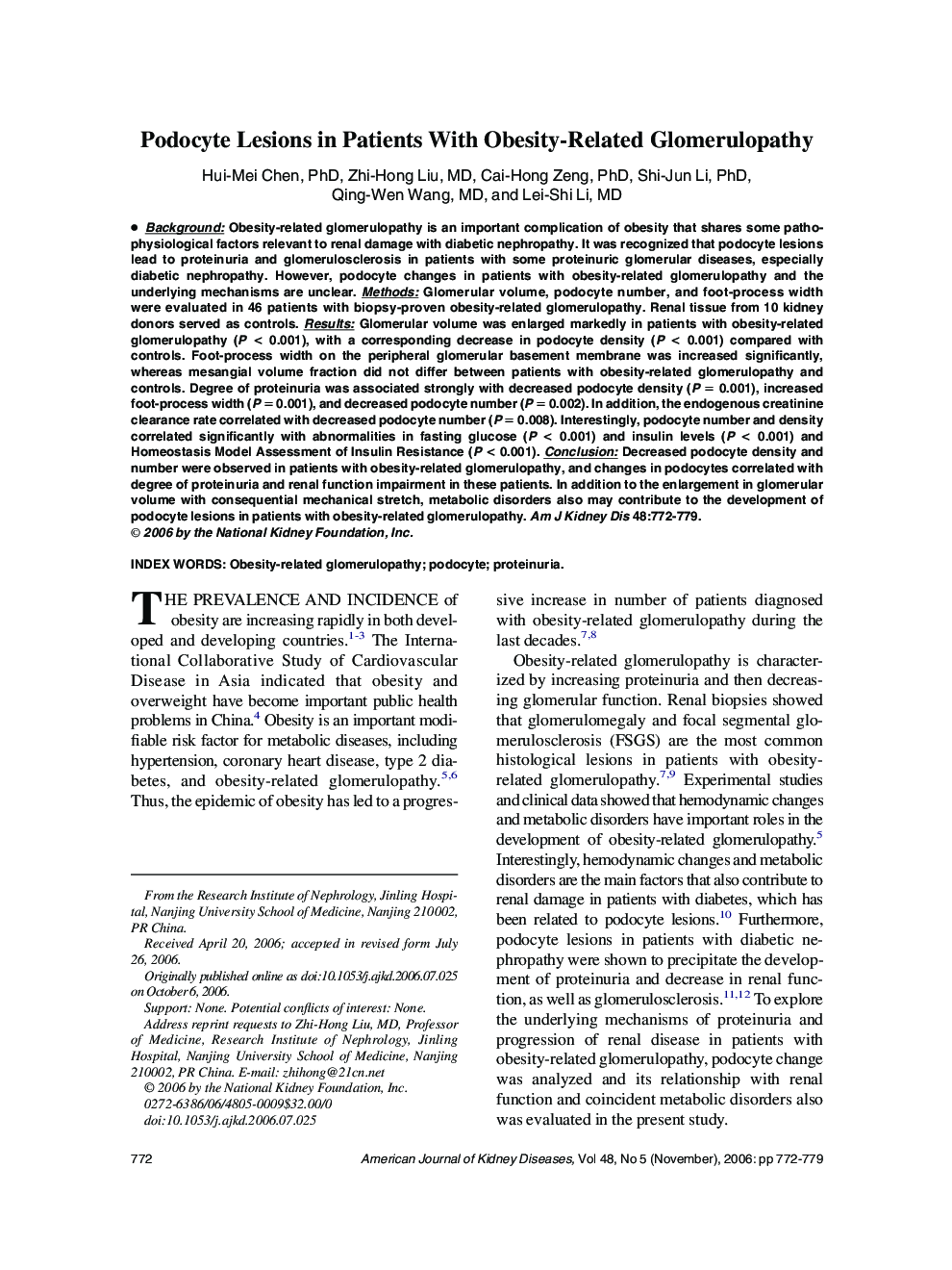| کد مقاله | کد نشریه | سال انتشار | مقاله انگلیسی | نسخه تمام متن |
|---|---|---|---|---|
| 3851577 | 1598380 | 2006 | 8 صفحه PDF | دانلود رایگان |
عنوان انگلیسی مقاله ISI
Podocyte Lesions in Patients With Obesity-Related Glomerulopathy
دانلود مقاله + سفارش ترجمه
دانلود مقاله ISI انگلیسی
رایگان برای ایرانیان
کلمات کلیدی
موضوعات مرتبط
علوم پزشکی و سلامت
پزشکی و دندانپزشکی
بیماریهای کلیوی
پیش نمایش صفحه اول مقاله

چکیده انگلیسی
Background: Obesity-related glomerulopathy is an important complication of obesity that shares some pathophysiological factors relevant to renal damage with diabetic nephropathy. It was recognized that podocyte lesions lead to proteinuria and glomerulosclerosis in patients with some proteinuric glomerular diseases, especially diabetic nephropathy. However, podocyte changes in patients with obesity-related glomerulopathy and the underlying mechanisms are unclear. Methods: Glomerular volume, podocyte number, and foot-process width were evaluated in 46 patients with biopsy-proven obesity-related glomerulopathy. Renal tissue from 10 kidney donors served as controls. Results: Glomerular volume was enlarged markedly in patients with obesity-related glomerulopathy (P < 0.001), with a corresponding decrease in podocyte density (P < 0.001) compared with controls. Foot-process width on the peripheral glomerular basement membrane was increased significantly, whereas mesangial volume fraction did not differ between patients with obesity-related glomerulopathy and controls. Degree of proteinuria was associated strongly with decreased podocyte density (P = 0.001), increased foot-process width (P = 0.001), and decreased podocyte number (P = 0.002). In addition, the endogenous creatinine clearance rate correlated with decreased podocyte number (P = 0.008). Interestingly, podocyte number and density correlated significantly with abnormalities in fasting glucose (P < 0.001) and insulin levels (P < 0.001) and Homeostasis Model Assessment of Insulin Resistance (P < 0.001). Conclusion: Decreased podocyte density and number were observed in patients with obesity-related glomerulopathy, and changes in podocytes correlated with degree of proteinuria and renal function impairment in these patients. In addition to the enlargement in glomerular volume with consequential mechanical stretch, metabolic disorders also may contribute to the development of podocyte lesions in patients with obesity-related glomerulopathy.
ناشر
Database: Elsevier - ScienceDirect (ساینس دایرکت)
Journal: American Journal of Kidney Diseases - Volume 48, Issue 5, November 2006, Pages 772-779
Journal: American Journal of Kidney Diseases - Volume 48, Issue 5, November 2006, Pages 772-779
نویسندگان
Hui-Mei PhD, Zhi-Hong MD, Cai-Hong PhD, Shi-Jun PhD, Qing-Wen MD, Lei-Shi MD,